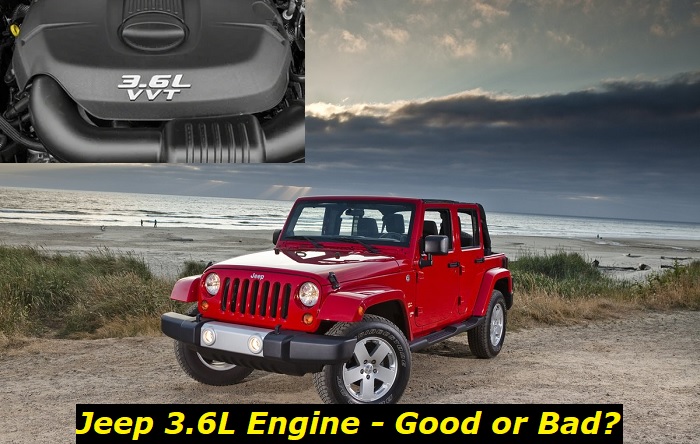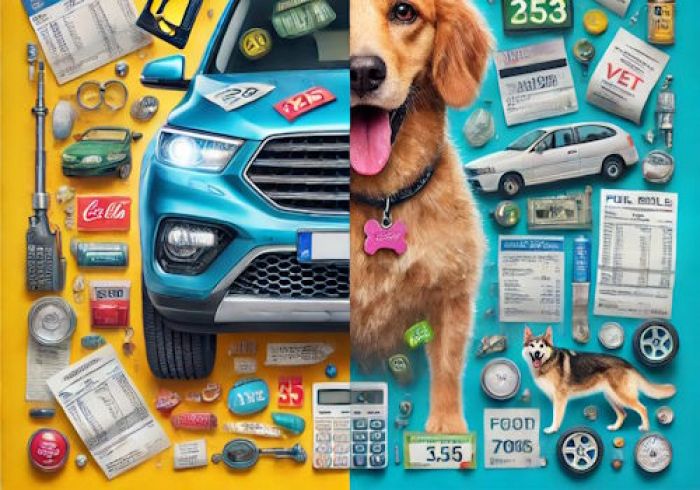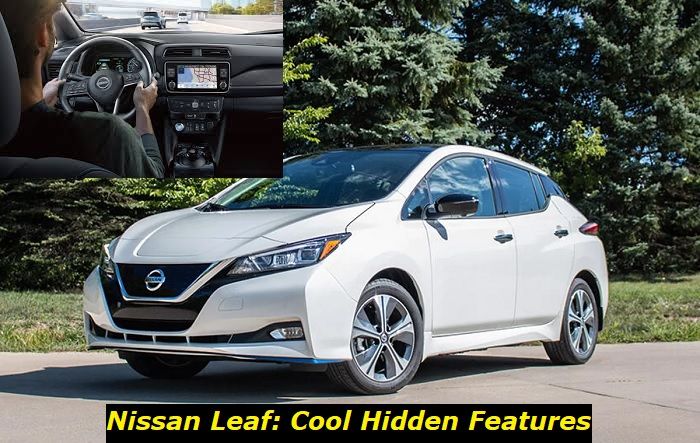Motorheads have high regard for the Jeep 3.6L engine, also known as the 3.6L Pentastar V6. The high praise for the product comes from its high level of durability and reliability. The engine has been in use since 2010 and is estimated to have powered 10 million vehicles under the umbrella of Fiat Chrysler Automobiles (FCA), including Jeep, Dodge, and Chrysler units. However, does it live up to the hype?
Despite the powerplant's overwhelming positive remarks over the years, it is not without its own set of problems. In this article, we will feature the most common issues found in the Jeep 3.6L engine as well as its longevity and key specs for your quick reference as to what you may expect from it.

Key features and my opinion about the engine
- Production years:2010-now
- Average lifespan of Pentastar V6:220,000-250,000 miles
- Fuel supply type:port injection
- Power range:280-310 hp
- Fuel efficiency:bad
- Engine block material:aluminum
- Engine reliability score:high
- The most common problems:phasers aren't durable, software problems in early model years, the VVL system is not perfect, thermostat and water pump are weak.
Most Common Problems Found in the Jeep 3.6L Engine
Based on owner feedbacks, reports, and mechanics who had years of experience with the engine, here are the problems that it is commonly prone of:
1. Cylinder Head Failure
The head #2 of the cylinder head is responsible for the intake and exhaust of the engine. It is made up of several chambers that allow the air and fuel mixture to enter and the exhaust to exit. This part is known to overheat in Jeeps so better watch out for its signs.
There are several symptoms of cylinder head failure due to head #2 overheating in the Jeep 3.6L Pentastar V6 engine. These include the check engine light turning on, misfire, loss of power, decreased fuel economy, and increased engine temperature. The possible causes of this problem are numerous, but they can be grouped into three main categories: improper cooling, incorrect valve clearance, and piston-to-valve interference.
Improper cooling is the most common cause of cylinder head failure due to head overheating. This can be due to several factors, including a faulty radiator, coolant leaks, or an inefficient cooling system.
Incorrect valve clearance is another possible cause of the problem. This can be because of incorrect installation of the valves, incorrect adjustment of the valves, or wear of the valve components.
Piston-to-valve interference is the third major category. This can be caused by incorrect piston design, incorrect valve timing, or excessive piston clearance.
Once the cause of the problem has been determined, it is important to take corrective action to prevent further damage to the engine. In some cases, this may require nothing more than replacing a faulty part, or calibration if no components have been damaged. However, in other cases, more extensive repairs may be necessary.
In the given scenarios, it is always important to consult with a qualified mechanic to ensure that the adjustment or repairs are properly carried out.
2. Cam Follower Fault
A cam follower is a special-purpose bearing used in many internal combustion engines. Its function is to follow the profile of the camshaft and then transfer the motion to the valves or pushrods. In the Jeep 3.6L engine, the cam follower is located at the end of the rocker arm and actuates the valves.
If there is a problem with the cam follower, it can cause some issues with the engine. The most common symptom of a faulty cam follower in Jeeps is a ticking noise coming from the engine. This is caused by the loose parts of the cam follower hitting against each other as they move up and down.
The other red flags pointing to a bad cam follower are reduced fuel economy, misfires, and loss of power. The problem can also make the engine run rough or stall.
There are a few possible causes of a cam follower issue in the Jeep 3.6L engine. One possibility is that the cam follower itself is damaged or worn out. Another possibility is that there might be something blocking the movement of the component, such as debris build-up on the surfaces that it moves against.
Finally, it is likely caused by an issue with the rocker arm. If the rocker arm is not moving freely, it can force the cam follower to bind or stick, which will eventually lead to the symptoms mentioned above.
In most cases, the only way to fix a problem with the cam follower is to replace it. This is because its parts are very small and delicate, and they are not designed to be repaired. In some cases, it may be possible to clean or replace the rocker arm if it is the cause of the problem.
If you suspect that your Jeep 3.6L engine has a problem with the cam follower, it is important to have it checked out by a qualified mechanic as soon as possible. Ignoring the problem could lead to major damage to the engine, which will require it to be rebuilt or replaced.
3. Water Pump Seizing
The water pump ensures the flow of coolant throughout the engine block, cylinder head, hoses, and radiator to maintain the engine's ideal operating temperature. When the water pump seizes in a Jeep 3.6L engine, it can cause several symptoms. These may include overheating, leaks, and engine damage.
Seizing can occur due to a number of reasons, including lack of lubrication, debris build-up, or incorrect installation. To fix the problem, the water pump usually has to be replaced. This is typically a fairly simple process, but it may require special tools or knowledge depending on the make and model of the vehicle.
In some cases, parts such as the timing chain or thermostat may also need to be changed as a result of damage from the seizing water pump.
Lack of lubrication is one of the most common causes of water pump failure. The water pump is lubricated by the coolant, so if there is not enough coolant in the system, the pump can seize. This can happen if there is a leak in the cooling system, or if the coolant level gets too low for some other reason.
Debris build-up can also cause seizing, as it can prevent the pump from moving freely. This build-up can come from anything that gets into the cooling system, such as rust, dirt, or scale. The incorrect installation of the water pump can lead to seizing, too, as it can cause stresses on the pump that lead to binding and eventual failure.
Water pump malfunction can cause many problems for the engine, so it is important to have it fixed as soon as possible. Seized pumps can cause the engine to overheat, as they are not able to circulate coolant properly. This can lead to serious engine damage, and in some cases may even result in the need for a new engine.
Furthermore, seized pumps can cause coolant to leak out of the system, which can lead to low coolant levels, overheating, and even fire.
4. Radiator Problem
Radiator problems in the Jeep 3.6L engine can lead to overheating and, ultimately, engine failure. The function of the radiator is to cool the engine by circulating coolant through it. If the radiator is not functioning properly, the engine will overheat and may sustain damage.
There are several symptoms of radiator problems in the Jeep 3.6L engine. The most common symptom is overheating. The engine will run hot and may eventually overheat and shut down. Another symptom is coolant leaks. If the radiator is leaking, it will need to be replaced.
One common cause of this problem in the Jeep 3.6L engine is a leak in the radiator. Another is clogging. One more possible cause is a problem with the water pump itself as mentioned earlier.
There are several possible solutions to radiator problems in the Jeep 3.6L engine. One possible solution is to replace the radiator. Another possible solution is to repair the leak and clear the clogged debris. A third possible solution is to replace the water pump.
If the radiator is not functioning properly or is damaged beyond repair, it may need to be replaced immediately.
5. Oil Pump Defect
When the oil pump in a Jeep 3.6L engine fails, it can trigger a lot of trouble in the unit. The engine may overheat, the vehicle may stall, and there may be strange noises coming from the engine. Oil pump failure can also cause the engine to run rough or lose power.
There are a few possible causes of oil pump failure. The most common is a build-up of debris in the pump, which can restrict oil flow and cause the pump to fail. Another is loss of prime, which can happen if the engine is allowed to run out of oil. Likewise, in normal conditions, the effects of normal wear and tear can eventually take a toll on the oil pump and cause it to fail.
The best way to prevent oil pump failure is to regularly change the oil and filter and to check the oil level frequently. If the pump does fail due to the reasons stated here, it will need to be replaced.
Longevity of the Jeep 3.6L Engine
Notwithstanding the issues that it is known for, the Jeep 3.6L Pentastar V6 engine is a pretty solid machine. There have been reviews and reports that it could last around 250,000 to 300,000 miles with proper care and maintenance. A handful of its users even claimed that they have pushed the engine up to a whopping 500,000 miles with only minor repairs and regular servicing.
Key Specs of the Jeep 3.6L Engine
The Jeep 3.6L engine is a gasoline-fed, six-cylinder unit with a V configuration. It is made of aluminum block and head material with a dual-overhead-camshaft (DOHC) design possessing four valves per cylinder. The unit is driven by a timing chain and it utilizes a sequential multi-point fuel injection (MPFI) for fuel delivery.
The engine has a bore of 3.78 inches and a stroke of 3.27 inches. These allow a compression ratio of 10.2:1 for the old version and 11.3:1 for the updated version of the power unit.
At its peak, the 3.6L Pentastar is capable of producing 275 to 305 hp at 6,350 and 6,750 rpm, and 251 to 269 lb-ft of torque at 4,175 to 4,800 rpm in its various applications.
Conclusion
For more than a decade, the Jeep has been banking on the power, reliability, and durability of the 3.6L Pentastar. That does not mean it is trouble-free though, but then again, getting wind of the problems at their early signs is an advantage so you can deal with them on the get-go before they blow out of proportion.
About the authors
The CarAraC research team is composed of seasoned auto mechanics and automotive industry professionals, including individuals with advanced degrees and certifications in their field. Our team members boast prestigious credentials, reflecting their extensive knowledge and skills. These qualifications include: IMI: Institute of the Motor Industry, ASE-Certified Master Automobile Technicians; Coventry University, Graduate of MA in Automotive Journalism; Politecnico di Torino, Italy, MS Automotive Engineering; Ss. Cyril and Methodius University in Skopje, Mechanical University in Skopje; TOC Automotive College; DHA Suffa University, Department of Mechanical Engineering






Add comment